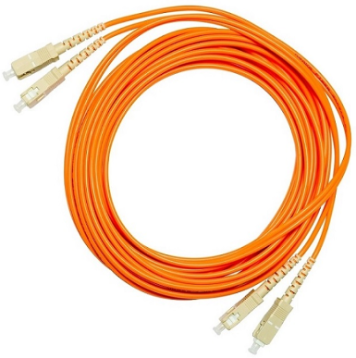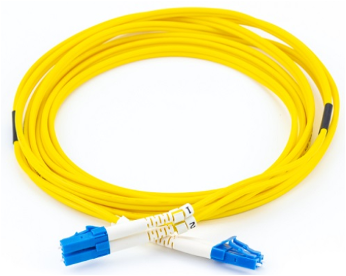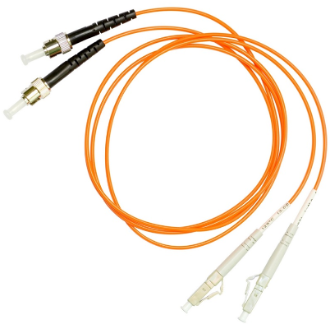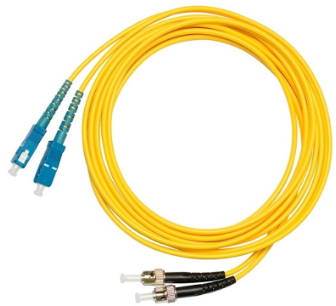
About Lesson
Fiber-Optic Cabling
Describe fiber optic cabling and its main advantages over other media.
Properties of Fiber-Optic Cabling
- Not as common as UTP because of the expense involved
- Ideal for some networking scenarios
- Transmits data over longer distances at higher bandwidth than any other networking media
- Less susceptible to attenuation, and completely immune to EMI/RFI
- Made of flexible, extremely thin strands of very pure glass
- Uses a laser or LED to encode bits as pulses of light
- The fiber-optic cable acts as a wave guide to transmit light between the two ends with minimal signal loss
Types of Fiber Media
Single-Mode Fiber

- Very small core
- Uses expensive lasers
- Long-distance applications
Multimode Fiber

- Larger core
- Uses less expensive LEDs
- LEDs transmit at different angles
- Up to 10 Gbps over 550 meters
Dispersion refers to the spreading out of a light pulse over time. Increased dispersion means increased loss of signal strength. MMF has greater dispersion than SMF, with a the maximum cable distance for MMF is 550 meters.
Fiber-Optic Cabling Usage
Fiber-optic cabling is now being used in four types of industry:
- Enterprise Networks – Used for backbone cabling applications and interconnecting infrastructure devices
- Fiber-to-the-Home (FTTH) – Used to provide always-on broadband services to homes and small businesses
- Long-Haul Networks – Used by service providers to connect countries and cities
- Submarine Cable Networks – Used to provide reliable high-speed, high-capacity solutions capable of surviving in harsh undersea environments at up to transoceanic distances.
Our focus in this course is the use of fiber within the enterprise.
Fiber-Optic Connectors
- Straight-Tip (ST) Connectors

- Lucent Connector (LC) Simplex Connectors

- Subscriber Connector (SC) Connectors

- Duplex Multimode LC Connectors

Fiber Patch Cords
- SC-SC MM Patch Cord

- LC-LC SM Patch Cord

- ST-LC MM Patch Cord

- ST-SC SM Patch Cord

A yellow jacket is for single-mode fiber cables and orange (or aqua) for multimode fiber cables.
Fiber versus Copper
Optical fiber is primarily used as backbone cabling for high-traffic, point-to-point connections between data distribution facilities and for the interconnection of buildings in multi-building campuses.
| Implementation Issues | UTP Cabling | Fiber-Optic Cabling |
|---|---|---|
| Bandwidth supported | 10 Mb/s – 10 Gb/s | 10 Mb/s – 100 Gb/s |
| Distance | Relatively short (1 – 100 meters) | Relatively long (1 – 100,000 meters) |
| Immunity to EMI and RFI | Low | High (Completely immune) |
| Immunity to electrical hazards | Low | High (Completely immune) |
| Media and connector costs | Lowest | Highest |
| Installation skills required | Lowest | Highest |
| Safety precautions | Lowest | Highest |
Other related topics
| Topic Title | Topic Objective |
|---|---|
| Purpose of the Physical Layer | Describe the purpose and functions of the physical layer in the network. |
| Physical Layer Characteristics | Describe characteristics of the physical layer. |
| Copper Cabling | Identify the basic characteristics of copper cabling. |
| UTP Cabling | Explain how UTP cable is used in Ethernet networks. |
| Fiber-Optic Cabling | Describe fiber optic cabling and its main advantages over other media. |
| Wireless Media | Connect devices using wired and wireless media. |
Other useful information
- Full CCNA Course
- CCNA Certificate Information
- 200-301 CCNA Exam Questions and Solutions
- 200-301 CCNA Exam Topics
Join the conversation